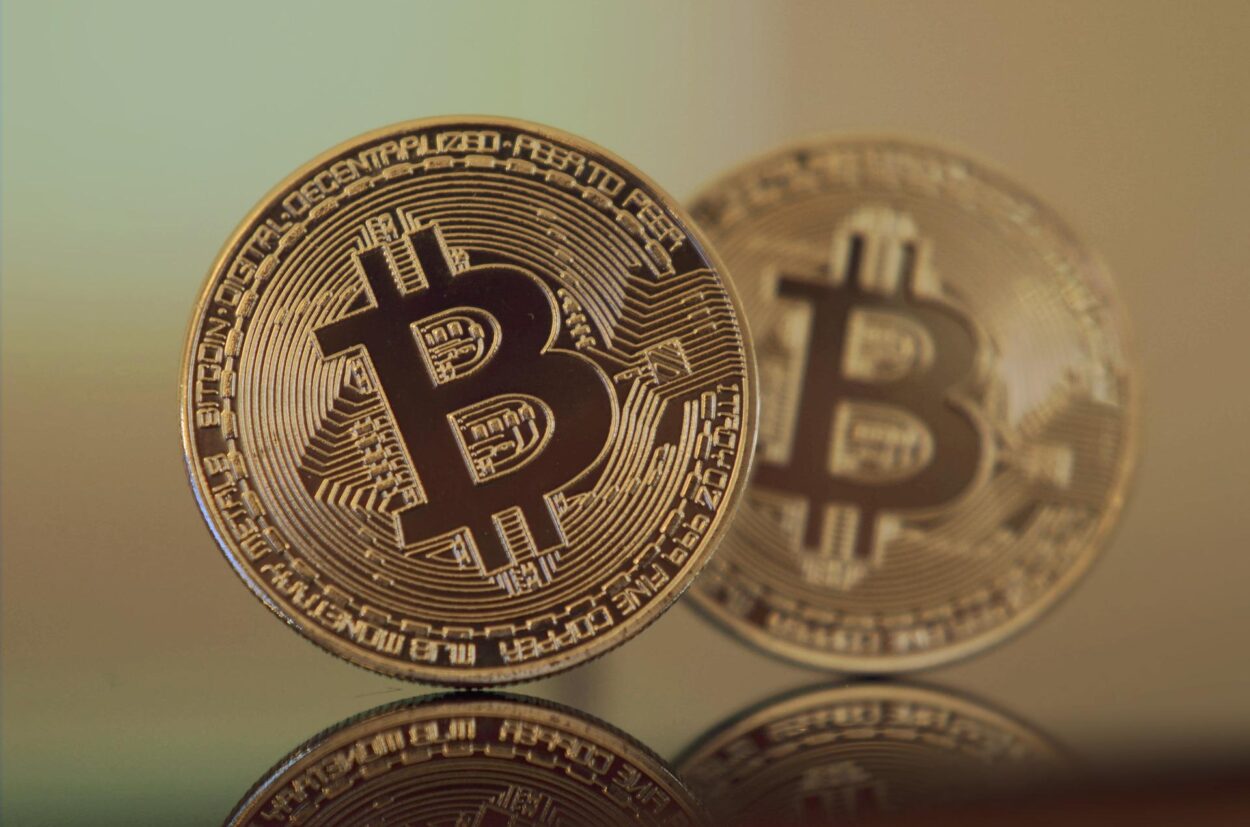
When I started looking at bitcoins and cryptocurrency in 2015 I was already 65 years old. Many of the early adopters and proponents of bitcoins were in their 20s and 30s. Even today most BTC enthusiasts are shocked when I tell them that there was a popular digital currency a decade before Satoshi wrote his famous paper.
In 1999, at the tail end of the dotcom era, two aspiring entrepreneurs named Spencer Waxman and Robert Levitan launched a digital currency called flooz through their website called Flooz.com. They promised that flooz would disrupt the new online retail industry and become the preferred medium of exchange for shoppers and merchants worldwide.
Flooz was backed by a lot of VC investors to the tune of $35 million. It had a celebrity spokesperson, Whoopi Goldberg, who appeared in radio and TV ads and in newspapers and magazines. Her face adorned the sides of NY transit buses, hawking flooz as the future of currency. Does any of this sound familiar?
A significant number of retail customers loved the whole idea. More than 125,000 new accounts were opened in the first 90 days. In the first 12 months, roughly $25 million in flooz currency was purchased and used.
Flooz customers would sign up to Flooz.com. They would purchase flooz certificates for specific retailers, which they could then use themselves or pass along to a gift recipient via email. Because the flooz certificates did not fluctuate in value no one ever thought that these were securities or that they needed to be regulated in any way.
This helped the retailers build traffic in the new internet marketplace and a variety of names you would know signed up. You could buy chocolates from Godiva, cookies from Mrs. Fields, and clothing from J. Crew. Tower Records, Barnes and Noble and Starbucks signed on. You could buy Swiss Army knives, all kinds of delicacies to eat, and cigars to smoke.
There was an expanding group of retailers and continuing adoption by a fast-growing customer base. Notwithstanding the company filed for bankruptcy and went out of business within 2 years.
Business school students spend hours poring over the case studies of businesses that succeed and an equal time studying businesses that failed. The dot-com era gave us plenty of both.
The dot-com era, for those of you who were not there, was a heady time when arrogant VCs tried to put lipstick on every pig of a company that came along as long as the company’s business plan included the “internet”. If you replace the word “Internet” in that last sentence” with “blockchain” or “crypto” the similarities to what is occurring in the marketplace today will become obvious.
One of the great failures of the dotcom era was a company called Pets.com. Its business model, selling pet food and pet supplies directly to consumers made a lot of common sense. Consumers spend a lot of money in this market every year. People who purchase pet food are usually repeating customers, month to month.
There is also the fact that home delivery of a 20lb. bag of dog food made a lot of sense to people who were loading them into and out of the trunk of their cars every month. Capped off by the fact that Pets.com actually charged less than most brick-and-mortar pet supply stores, this one had all the makings of a winner.
There were several VCs invested in this. One of the early investors was Amazon.com. Amazon was still selling mostly books at that time. Pets.com sold far fewer distinct products. Amazon felt that with fewer products to sell, it could lend Pets.com logistical support.
Like Flooz, Pets.com had a large advertising budget and a celebrity spokesperson, in this case, a canine sock puppet. The spokes-puppet was everywhere, on the Today Show, the Tonight Show, and at Macy’s Thanksgiving Day Parade. There was even a Superbowl ad.
The company went public in February 2000 raising more than $80 million. The venture funds made a profit but the investors in the IPO lost big. Nine months later, Pets.com closed its doors and liquidated.
The problem was that Pets.com never made a profit. It hemorrhaged money both before and after the IPO. Its low prices, coupled with the fact that it absorbed shipping costs on those big bags of dog food and the fact that it spent a lot on its advertising campaign, meant that the company lost money on every order.
Why would an underwriter take a company public if it was losing money? Why would the underwriter price the offering at $11 per share when that valuation was a fantasy? That is the question no one asked at the time.
The answer was that the VCs and the underwriters were in bed together. Each IPO made a lot of money for both. It was actually a con game. VCs invest in each other’s portfolio companies, bumping up the valuations with each round, hoping for an IPO to dump the grossly over-valued shares on the public.
Historically, at least since Ben Graham, earnings were the metric by which a stock’s price was judged. That began to change in the 1980s junk bond era.
Junk bonds were issued by companies that lacked the cash flow to make interest payments on bonds with lower interest rates. They promised that the infusion of cash would spur their growth to the point that they could make higher interest payments. Very few actually did.
Carry that forward 10 years when research analysts at the big Wall Street firms underwriting the dotcom stocks started to value growth over income. They claimed that the new internet era required new metrics.
I asked many of the analysts, including several I cross-examined under oath if they had ever seen the idea that growth should supplant earnings as a metric in the valuation of a company in a peer-reviewed journal. I never got an affirmative answer, nor would I have expected to get one.
Then, as now VCs are self-serving con artists. The valuations they spit out mislead investors and are part and parcel of a scheme to defraud them.
Venture capital is a marginal activity in the capital markets. In many ways, the JOBS Act has made what they do obsolete. Raising seed or growth capital has never been easier or less expensive. Unfortunately many people in the Reg. CF space have adopted the VC pricing model and mislead even the smallest, most inexperienced investors.
There is one more thing about flooz. Before it closed its doors Flooz.com it was notified by the FBI that as many as one in five of its gift cards had been purchased by Russian mobsters using them to launder money. The same is clearly true about bitcoins.
My early investigations into BTC in 2016 produced reports of Australian law enforcement officers seizing $12 million in BTC from a human trafficking ring. That was followed by several thousand ICO offerings that raised multiple billions of dollars from unsuspecting investors and just disappeared.
Flooz was a template for the crypto crimes that are running today up to and including FTX. People who tell me that I don’t understand crypto as the future of currency and finance never mention flooz. As far as the future of crypto as a currency is concerned, if you don’t know flooz, you don’t know squat.
The crypto con game follows the flooz game plan right down to the Superbowl ads and celebrity endorsements. The end game is the same, dump crypto onto small, uninformed investors.
I will continue to blow my whistle at Fidelity Investments which is trying to legitimatize BTC for retirement accounts. I have read the research reports that support that recommendation. They would make the worst of the dotcom era analysts blush. Fidelity was still claiming BTC is a superb store of value after the price dropped from $60 to $16.
Fidelity isn’t buying and then selling BTC to make a legitimate spread. They have been mining BTC since at least 2014. They have a minimal cost basis on each bitcoin that they are selling at $20,000 each.
Markets run in cycles. There was a tech boom and bust in the 1960s that coincided with our race to the moon. There were companies back then raising capital for the next shiny new tech products.
There were certainly scams and certainly victims of those scams. But nothing that had the power and reach of the internet and social media to falsely pump up valuations and make a lot of people believe them.
Perhaps the biggest red flag is Satoshi himself. There are people who worship at his feet. There are people who call him a modest genius who shuns the limelight. They refer to Satoshi as someone who changed capitalism forever.
Will Satoshi come out of the shadows if he gets a Nobel Prize for his achievement? Will he fly to Stockholm and humbly thank his mother for pushing him to study and his mentors for inspiring him to think?
Personally, I think Satoshi is a construct of Russian oligarchs who created a system to launder their money and a narrative to legitimize it. Satoshi’s paper came about only 8 years after Flooz.com shut down.
Am I being too cynical?
Actually, I am just following the money. Un-named “whales” dominate the market bitcoin trading market. It is certainly plausible that bitcoins were created by mobsters as a way to launder their money and not the other way around.
Besides, I would rather think of Satoshi as an international criminal than a shy, misguided genius.
It’s the romantic in me.
If you’d like to discuss this article or anything related, then please contact me directly HERE
Or you can book a time to talk with me HERE



